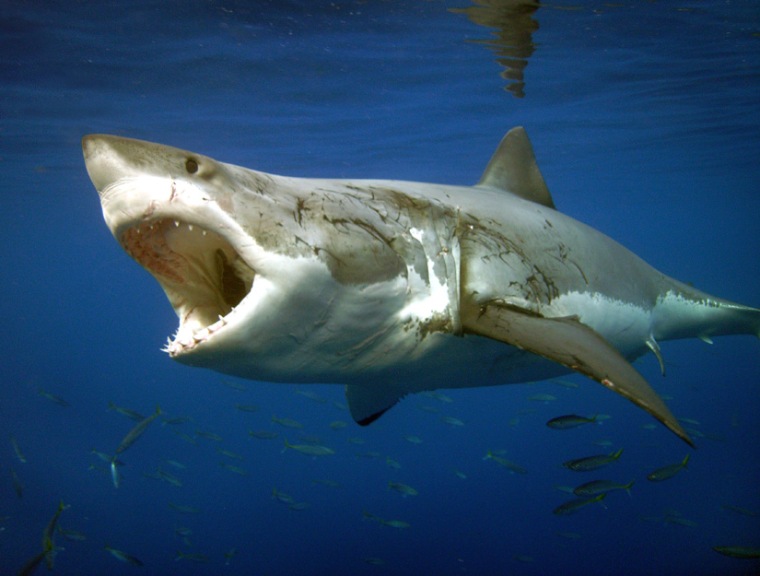A shark can pick up a human heart beating close by so it's helpful to have a deterrent system handy when swimming in ocean waters where they roam.
This summer, 61-year-old distance swimmer Diana Nyad's team plans to use a system called Shark Shield during her attempt to swim the 100-odd miles from Cuba to the Florida Keys. The tech isn't new, but it will be put to the test like never before.
"It pulses a bit like an electric fence," said Martin Grace, general manager for the Australia-based company Shark Shield. "The shark detects that, doesn't like it, and you'll see the skin shudder in the shark. It will have a bit of a look around and then go away."
Australian Susie Maroney successfully swam the Cuba-Florida route in 1997, but had assistance from a protective shark cage. In June, swimmer Penny Palfrey set a long-distance world record for an unassisted 67-mile marathon between two Cayman islands. Her escort boat was equipped with a Shark Shield.
For her attempt on the record, Nyad said in a statement to the press that members of her team will accompany her in kayaks, dragging Shark Shields under the water. Much has been reported about Nyad's preparations, but some confusion remains about what the Shark Shield system is, and what it's not.
Christine Ambrosino researches electrosensory systems in hammerhead sharks as part of her graduate work in the University of Hawaii's Department of Zoology. Sharks have small pores that lead down canals to gel-filled sacs called the Ampullae of Lorenzini. These sacs are what allow sharks to detect weak bio-electric fields set off by all living tissue, Ambrosino said.
"They basically act like mini volt readers on the shark's head," she said. This super-sensitivity helps sharks detect prey, avoid predators and navigate the ocean.
Shark Shield is a nonlethal system containing an antenna with electrodes at the top and bottom. It works by producing electrical waves underwater that are strong enough to cover about a 10- to 16-foot radius, Martin Grace said. The system comes in different forms, including ones that strap to the ankle, attach to a surfboard and can be affixed to small vessels such as canoes and kayaks.
Ambrosino had heard of this kind of shark deterrent. "They set up such a strong electric pulse in the water that as the shark swims toward it, it's like punching them in the face with a cattle prod," she said. "If you're out there and you see a big shark coming, that's security that you probably want to have."
Sharks respond variably to strong electronic currents. It drives away some shark species under certain circumstances but not in others. Ambrosino compares the systems to electric dog fences, and she has seen dogs jump through those.
For those reasons, shark-deterring technology doesn't have any guarantees. In 2008, a surfboard equipped with such a system was actually eaten by a shark. Martin Grace compares Shark Shield technology to a seatbelt.
"A seatbelt will save you 99 percent of the time, but there will always be the possibility of that one major accident," he said. "The shark is a wild animal and we can't guarantee that (Shark Shield) will protect you 100 percent of the time."
Nyad is ready to start her swim any day now, but has been waiting for the weather conditions to improve before starting out. In a statement published by CNN online, she said that in addition to the Shark Shields, four shark specialists will take turns patrolling nearby shark activity and deter them if necessary. She added that no shark will be killed during her swim to Florida.
Grace said that Shark Shield has started working with the Natal Sharks Board in South Africa on researching a commercial system that could provide a protective barrier for larger areas.
"I'm glad that people are finally looking into developing technologies that protect not only humans when they're in the water but sharks also," Ambrosino said. "We both want to use this playground and it would be nice if we can play along together."
